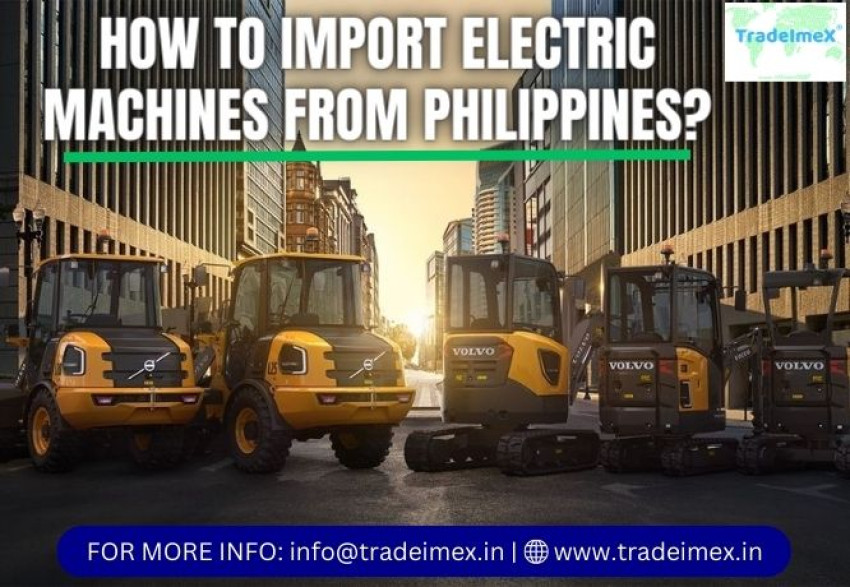
The Philippines has turned into a noticeable player in the creation and commodity of electric machines, including generators, engines, transformers, and different other electrical hardware. As an entrepreneur or individual hoping to import these top-notch items, it is pivotal to comprehend the cycle and prerequisites included. In this complete blog post we will make you through the strides and contemplations to import electric machines from the Philippines effectively.
STEPS TO FOLLOW IN ORDER TO IMPORT ELECTRIC MACHINES FROM THE PHILIPPINES
STEP 1: RESEARCH AND IDENTIFY SUPPLIERS
The most vital phase in bringing in electric machines from the Philippines is to direct careful exploration to recognize foreign providers. Search for trustworthy producers or merchants who work in the sort of electric machine you require after studying consciously about the Philippines Import Data statistics. Online exchange registries, industry affiliations, and business organizations can be important assets for tracking down likely providers. It is essential to assess the provider's standing, creation limit, item quality, certificates, and involvement with sending out to your country.
STEP 2: UNDERSTAND IMPORT REGULATIONS
Familiarize yourself with the import regulations and requirements of your country to ensure a smooth importation process. Contact the relevant government agencies or customs authorities to obtain information on import duties, taxes, permits, and any specific documentation needed. Additionally, check if there are any restrictions or regulations governing the importation of electric machines, such as safety standards, labeling requirements, or certifications.
STEP 3: ESTABLISH COMMUNICATION WITH SUPPLIERS
As you shortlist expected providers, lay out direct correspondence with them. Demand definite item indexes, particulars, and estimating data. It is essential to request tests or visit the provider's offices to evaluate the nature of their items. This step assists you fabricate a relationship with the provider, figure out their creation capacities, and arrange great agreements.
STEP 4: REQUEST QUOTATIONS AND FINALIZE THE ORDER
Based on the information received from various suppliers, request detailed quotations that include product specifications, quantity, packaging, shipping terms, and payment methods. Compare the quotes while considering factors like price, quality, lead time, and after-sales service. Negotiate terms and conditions, ensuring clarity on delivery schedules, warranties, and return policies. Once you have finalized the order, request a proforma invoice or sales contract from the supplier.
STEP 5: ARRANGE SHIPPING AND LOGISTICS
Coordinating the shipping and logistics of your imported electric machines is a crucial aspect of the process. Determine the most suitable mode of transportation, such as sea freight or air freight, based on factors like cost, urgency, and the nature of the products. Choose a reliable freight forwarder or shipping agent with experience in handling imports from the Philippines. They will assist you with customs clearance, documentation, and tracking your shipment until it reaches your destination.
STEP 6: MANAGE CUSTOMS AND REGULATORY COMPLIANCE
To guarantee a smooth customs clearance process, set up all the essential documentation expected by your country's traditions specialists. This commonly incorporates the business receipt, pressing rundown, bill of filling/aviation route bill, protection reports, import allows, and declarations of beginning. Also, verify that there are a particular marking or certificate prerequisites for electric machines in your country. Following all traditions and administrative methods is essential to stay away from deferrals or punishments.
STEP 7: RECEIVE AND INSPECT THE SHIPMENT
Once the shipment arrives at your designated port or airport, you should arrange for a thorough inspection of the goods. Ensure that the electric machines are in compliance with the specifications and quality agreed upon with the supplier. Check for any damages or discrepancies and document them properly. If necessary, negotiate with the supplier regarding compensation or replacements.
CONCLUSION
Importing electric machines from the Philippines can be a lucrative business opportunity, given the country's reputation for manufacturing high-quality electrical equipment. By following the steps outlined in this guide, you can navigate the importation process successfully. Remember to conduct thorough research, establish strong communication with suppliers, understand import regulations, manage logistics effectively, and comply with customs and regulatory requirements. With careful planning and attention to detail, you can import electric machines from the Philippines and contribute to the growth of your business.
To learn more on this topic and to get a full-fledged trade data records of Philippines, contact TradeImeX today and enjoy all the benefits of our services at least possible price.




